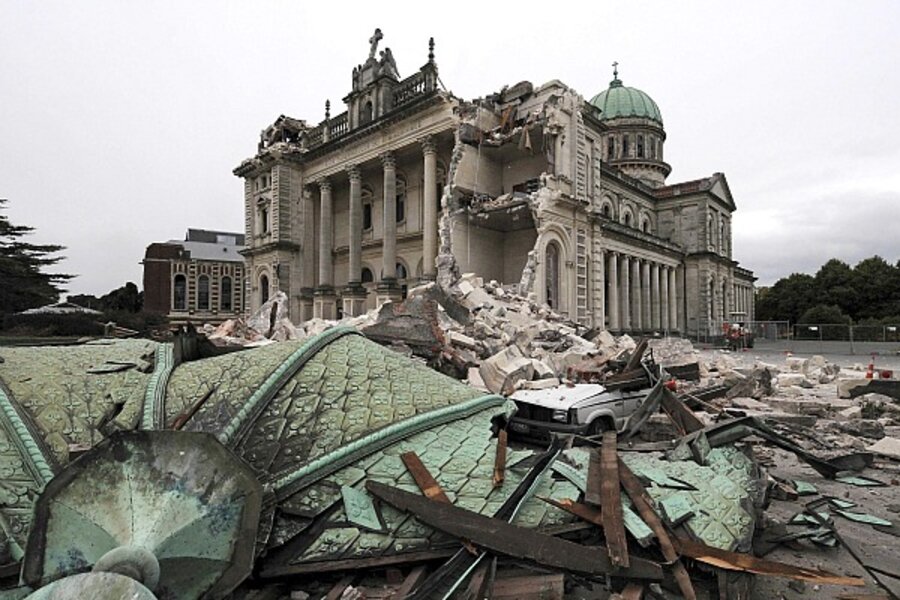New Zealand earthquake: Authorities scramble after temblor leaves at least 65 dead
Loading...
| Wellington, New Zealand
The mayor of New Zealand's second-largest city, Christchurch, has declared a state of emergency in the aftermath of a 6.3-magnitude earthquake that rocked the "garden city" shortly before 1 p.m. local time on Tuesday.
Prime Minister John Key, who was raised in Christchurch, said that at least 65 people are known to have died in what "may well be New Zealand's darkest day."
The New Zealand earthquake is already the deadliest to strike the country in the past 80 years, and the death toll is expected to rise. It's the second major earthquake to hit Christchurch in five months. September's quake caused an estimated $3 billion in damages from multiple aftershock, but no deaths.
This time, rescue crews are mobilizing from around the country to assist in what will be a massive rescue and rebuilding effort. For now, though, authorities in the country's capital, Wellington, are scrambling just to get information with the phone lines down and airports closed.
"There are people fighting for their lives at the moment, but there are also people fighting for them," Christchurch Mayor Bob Parker told reporters, even as the first of the day's more than 20 recorded aftershocks rumbled around him. "We're preparing ourselves for what I think will be a really sad, bleak day for our city – but be reassured, everybody is doing what they can."
Mr. Parker has asked some 350 military personnel to help in the evacuation of the city's downtown area.
Information trickle
In a statement, the country's deputy prime minister, Bill English, said that government agencies and emergency services were still putting together a picture of the damage and devastation.
"Information is still coming through," said Mr. English, speaking from a parliamentary bunker here in the New Zealand capital of Wellington. "This is a fast-moving situation and we will update you as we establish more ourselves."
Among the early offers of international assistance was the US government, which has said it will provide anything from its resources available in Honolulu.
Offices, homes, landmarks leveled
The New Zealand earthquake leveled a number of central offices, wiped out iconic landmarks, and destroyed many homes, leaving parts of the picturesque cityscape – now swathed in dust and gas vapors – "unlivable." Local media is full of accounts of people trapped in damaged buildings, and residents of Christchurch have been told to evacuate, as no area is considered safe at this time.
Among the multiple casualties were an unknown number of foreign nationals, staying a city hostel that caters to the younger cohort of the hundreds of thousands of international visitors who arrive each year in the country's distinctly Anglican locale. The centrally-located Christchurch Cathedral has long served as the city's most visible icon.
Today, that 110-year-old cathedral's looming spire, too, collapsed.
'Ring of fire'
Severe tremors are common in geologically young New Zealand, a land sometimes referred to as "the shaky isles" for its prime position on the Pacific Rim's "Ring of Fire" – a series of seismically active fault zones. But only a handful of earthquakes each year manage to do any damage in this relatively sparsely populated land of 4.4 million inhabitants.
The latest quake was unusually shallow, however, occurring at a depth of just three miles, and is one of only a few in New Zealand's 170-year history ever to strike so close beneath a major urban area.
Conventional wisdom has long had it that Wellington, built on an ever-jittery tectonic-plate boundary, would be first in line for such an event. But that perception changed Sept. 4, when what was thought to be a once-in-a-millennium 7.1 quake hit Canterbury Province, home to 400,000 people, including the residents of Christchurch.
Five months later, life in Christchurch had more or less returned to normal – until today.





